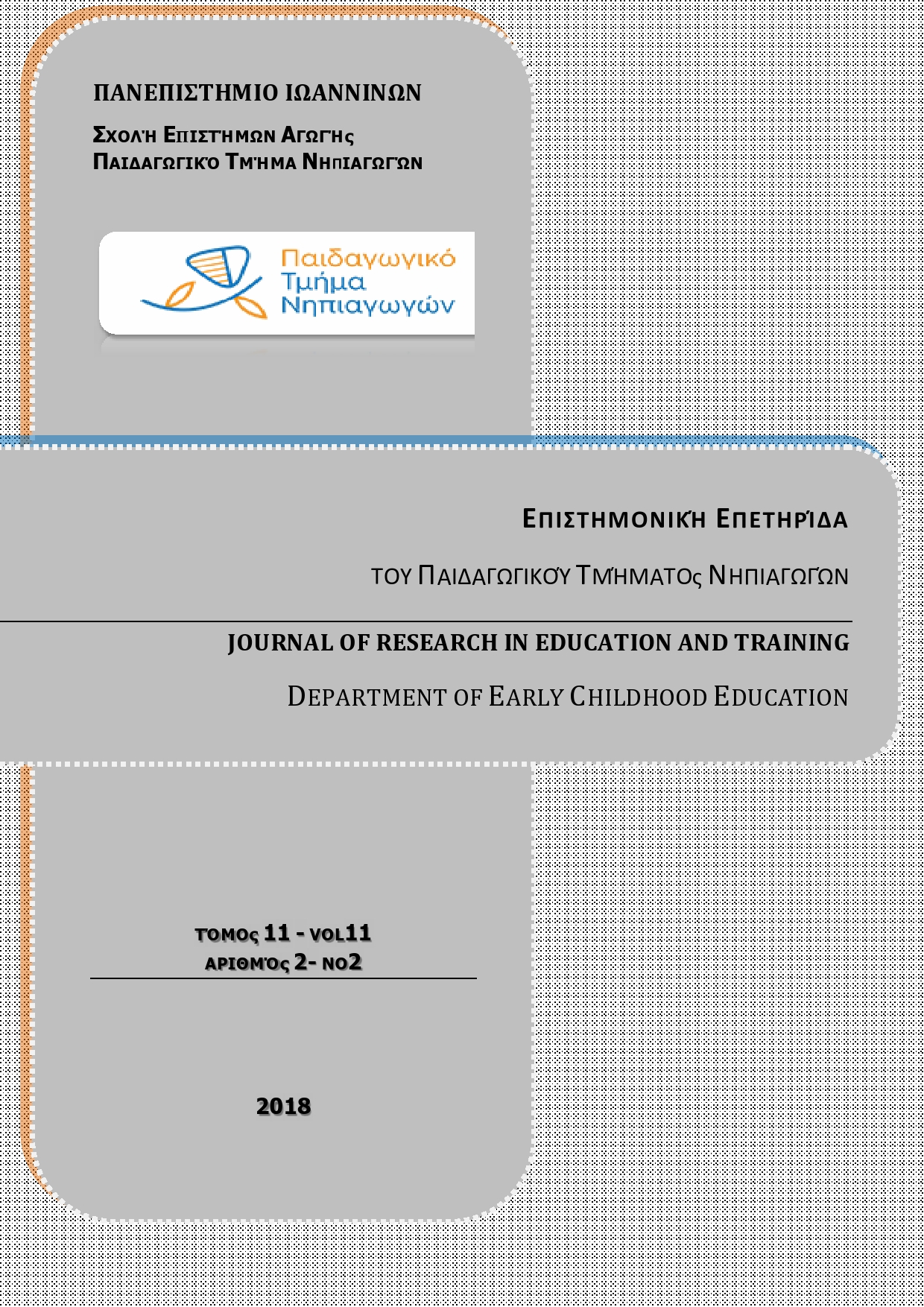Η βινιέτα ως εργαλείο ανίχνευσης των γνώσεων των μαθητών Δημοτικού Σχολείου για την αναπηρία

Περίληψη
Η βινιέτα είναι εικόνα ή περιγραφή μιας κατάστασης ή ένα σενάριο που προκαλεί προβληματισμό και μπορεί να χρησιμοποιηθεί εκτός των άλλων και ως ερευνητικό εργαλείο. Παρουσιάζει υποθετικές καταστάσεις και απευθύνει στους συμμετέχοντες ευθείες ερωτήσεις με σκοπό τη συλλογή δεδομένων που αφορούν ιδέες και αντιλήψεις. Το συγκεκριμένο εργαλείο, που χρησιμοποιήθηκε στο πλαίσιο της παρούσας έρευνας, αποτελούνταν από 12 εικόνες και κείμενα που στόχευαν στην εκτίμηση των γνώσεων των μαθητών, ως προς την έννοια «αναπηρία», πριν και μετά από την εφαρμογή ενός προγράμματος παρέμβασης που αφορούσε την ενημέρωση των μαθητών σε θέματα αναπηρίας. Στην έρευνα συμμετείχαν 364 μαθητές γενικών σχολείων (10 έως 12 ετών), στα οποία δεν υπήρχε μαθητής με αναπηρία. Η γενική επιλογή των μαθητών έγινε με επιλογή σχολικών μονάδων οι οποίες ήταν αντιπροσωπευτικές του μέσου αστικού πληθυσμού της περιοχής και όμορων περιοχών, ώστε το κοινωνικο-οικονομικό και πολιτιστικό προφίλ των μαθητών/ριών να είναι περίπου όμοιο. Από την ανάλυση των δεδομένων διαπιστώθηκε ότι οι μαθητές κατά κύριο λόγο συνδέουν την έννοια «αναπηρία» μόνο με την κινητική αναπηρία και φαίνεται να βρίσκονται σε σύγχυση όσον αφορά τα άλλα είδη αυτής, όπως στην περίπτωση των αισθητηριακών αναπηριών. Πιο ξεκάθαρη άποψη είχαν για τους μαθητές με σύνδρομο Down, καθώς τα χαρακτηριστικά του προσώπου ήταν εκείνα που κατεύθυναν τη σκέψη τους. Το χαμηλότερο ποσοστό σωστών απαντήσεων αφορούσε το παιδί με αυτισμό, καθώς λίγοι από τους μαθητές τον αναγνώρισαν ως μαθητή με αναπηρία, εύρημα αναμενόμενο. Από τα αποτελέσματα μετά την παρέμβαση διαπιστώθηκε ότι οι συμμετέχοντες στην Πειραματική Ομάδα είχαν διαμορφώσει διαφορετική αντίληψη όσον αφορά την αναγνώριση των ατόμων με αναπηρία, δίνοντας σχεδόν σε όλες τις ερωτήσεις σωστή απάντηση.
Λεπτομέρειες άρθρου
- Πώς να δημιουργήσετε Αναφορές
-
Λουάρη Μ. (2018). Η βινιέτα ως εργαλείο ανίχνευσης των γνώσεων των μαθητών Δημοτικού Σχολείου για την αναπηρία. Επιστημονική Επετηρίδα Παιδαγωγικού Τμήματος Νηπιαγωγών Πανεπιστημίου Ιωαννίνων, 11(2), 27–49. https://doi.org/10.12681/jret.8631
- Τεύχος
- Τόμ. 11 Αρ. 2 (2018)
- Ενότητα
- Άρθρα

Αυτή η εργασία είναι αδειοδοτημένη υπό το CC Αναφορά Δημιουργού – Μη Εμπορική Χρήση – Παρόμοια Διανομή 4.0.
Οι συγγραφείς που δημοσιεύουν σε αυτό το περιοδικό συμφωνούν στους παρακάτω όρους :
1. Οι συγγραφείς διατηρούν τα δικαιώματα πνευματικής ιδιοκτησίας επί των άρθρων τους, χορηγώντας στο περιοδικό το δικαίωμα της πρώτης δημοσίευσης. Άρθρα που δημοσιεύονται στο περιοδικό «Επιστημονική Επετηρίδα του Παιδαγωγικού Τμήματος Νηπιαγωγών της Σχολής Επιστημών Αγωγής του Πανεπιστημίου Ιωαννίνων» διατίθενται με άδεια Creative Commons 4.0, σύμφωνα με την οποία μπορούν να χρησιμοποιούνται ελεύθερα, με αναφορά στο/στη συγγραφέα και στην πρώτη δημοσίευση για μη κερδοσκοπικούς σκοπούς.
2. Οι συγγραφείς μπορούν να συνάπτουν ξεχωριστές, πρόσθετες συμβάσεις και συμφωνίες για την μη αποκλειστική διανομή του δημοσιευμένου στο περιοδικό έργου (π.χ. κατάθεση σε ένα ιδρυματικό αποθετήριο ή δημοσίευση σε ένα βιβλίο), με την αναγνώριση της πρώτης δημοσίευσης σε αυτό περιοδικό.
3. Στους συγγραφείς επιτρέπεται να δημοσιεύσουν την εργασία τους online (κατά προτίμηση σε ιδρυματικά αποθετήρια ή στην ιστοσελίδα τους) πριν και κατά τη διάρκεια της διαδικασίας υποβολής, καθώς αυτό μπορεί να οδηγήσει σε παραγωγικές ανταλλαγές, όπως επίσης και παλαιότερες και ευρύτερες παραπομπές δημοσιευμένων εργασιών (The Effect of Open Access)


